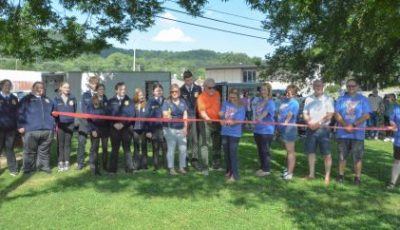Local school districts receive grant funds to help children over the summer
A generous grant of $130,000 has been provided to combat hunger in the summer, thanks to the No Kids Hungry organization’s commitment to ending hunger and poverty, and a portion of that funding is going to the Williamsburg Independent School and the Whitley County School District.
During school hours, some students depend on lunch meals, which can usually be the only meal they receive that day.
But what happens when school lets out for summer break?
Summer break can be one of the hungriest times of the year for these students.
Student meal programs were designed to combat summer hunger; however, they only reach a fraction of the kids who need them due to barriers like transportation, fuel costs, extreme weather and parent’s work schedule.
“There has long been a huge gap between the kids getting meals in the summertime and the kids who need them, creating an undue burden on family budgets and making it much harder for students to return to school in the fall healthy and ready to learn,” said Kate McDonald Goodin, No Kid Hungry Kentucky Campaign Director at Feeding Kentucky.
Thankfully, Congress approved significant improvements for the summer meals program, including new options that allow rural sites to offer the flexibilities that work for their community.
The No Kid Hungry grant supports the adaptations needed to reach as many kids as possible, while also being able to avoid some of the barriers mentioned above.
Ten school districts received the grant, including: Perry County Schools, Williamsburg Independent Schools, Middlesboro Independent Schools, Wayne County Schools, Whitley County Schools, Bell County Schools, Caverna Independent Schools, Trimble County Schools, Pineville Independent Schools, and Hopkinsville Family YMCA.
John Siler, Whitley County Superintendent, said the grant was for the more rural schools in Whitley County.
Siler also mentioned Sharon Foley, their Food Service Director, pursued the said grant and has always looked for ways that students are provided even when not in session.
“Between the two schools, around 450 students were benefited,” Siler informed. “In a rural area like ours, we have students that sometimes may not have adequate nutrition. In our school district, we always put our students first, whether it’s food or instructional needs… there’s a need out there, especially with inflation and grocery prices… We hope that this grant will be successful throughout the summer, and we hope there are opportunities with the state, such as more grants for more schools, not just these two,” Siler added.
Deb Tamblin, the Williamsburg Food Service Director, worries about students who do not get enough food to keep them healthy.
“To me, making sure that these kids have something, whatever it may be, helps us keep their social behavior more in check. If they do not have the food they can count on, they are going to be a different-minded child,” Tamblin said.
Tamblin says she wants to bring food that the students will want to eat. She strives for healthy and fresh food, saying it is important.
When asked about her goals with this grant, she said, “I hope this helps us reach as many kids possible throughout the summer in all areas of the county, especially where parents lack transportation…I know with this grant money that we can help… the kids will know that when they see a food truck, someone is going to bring them something.”








